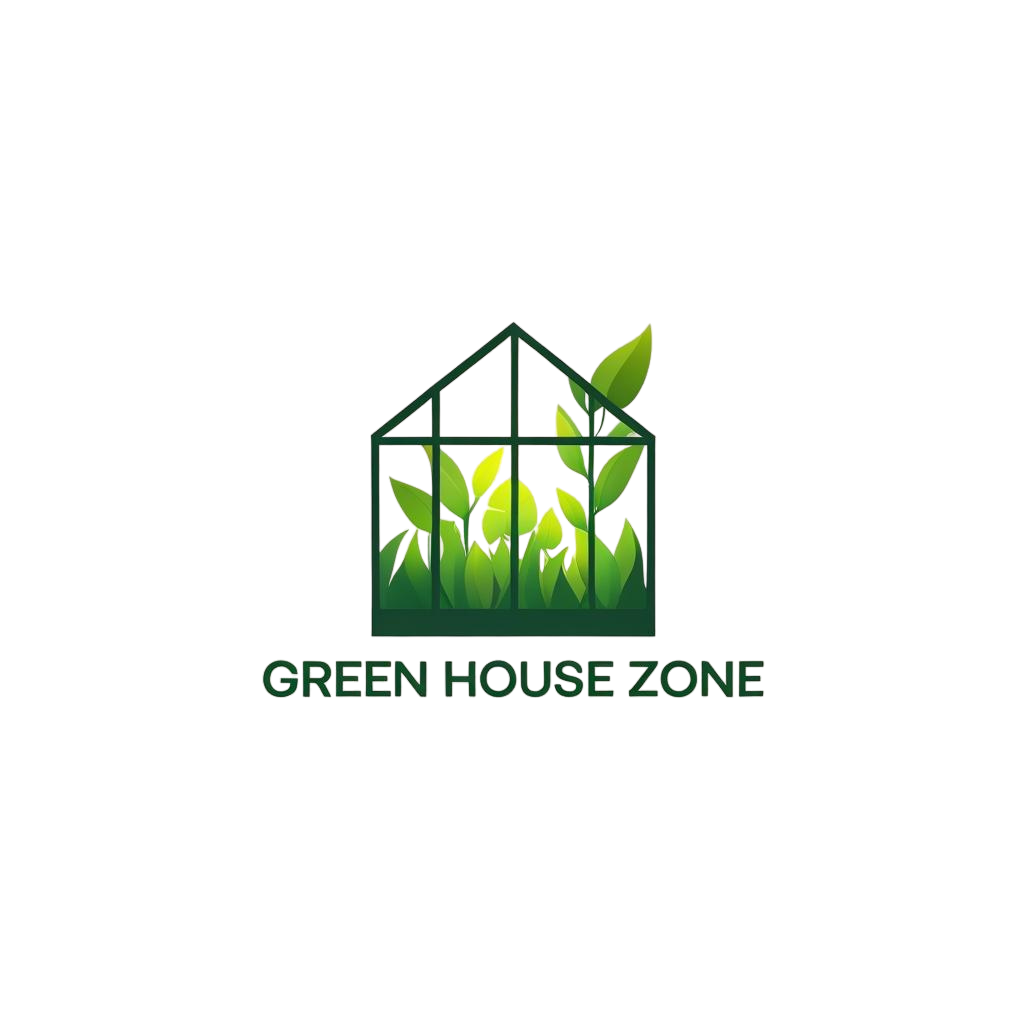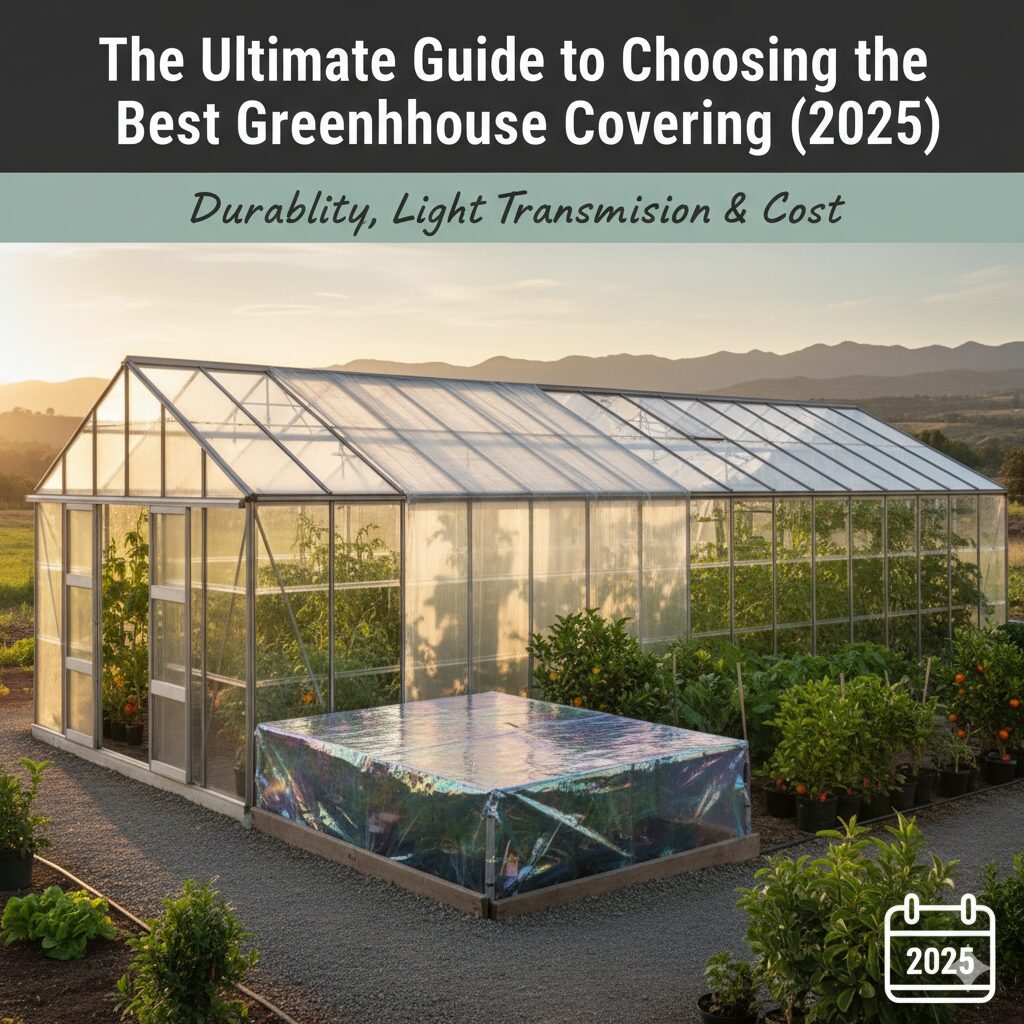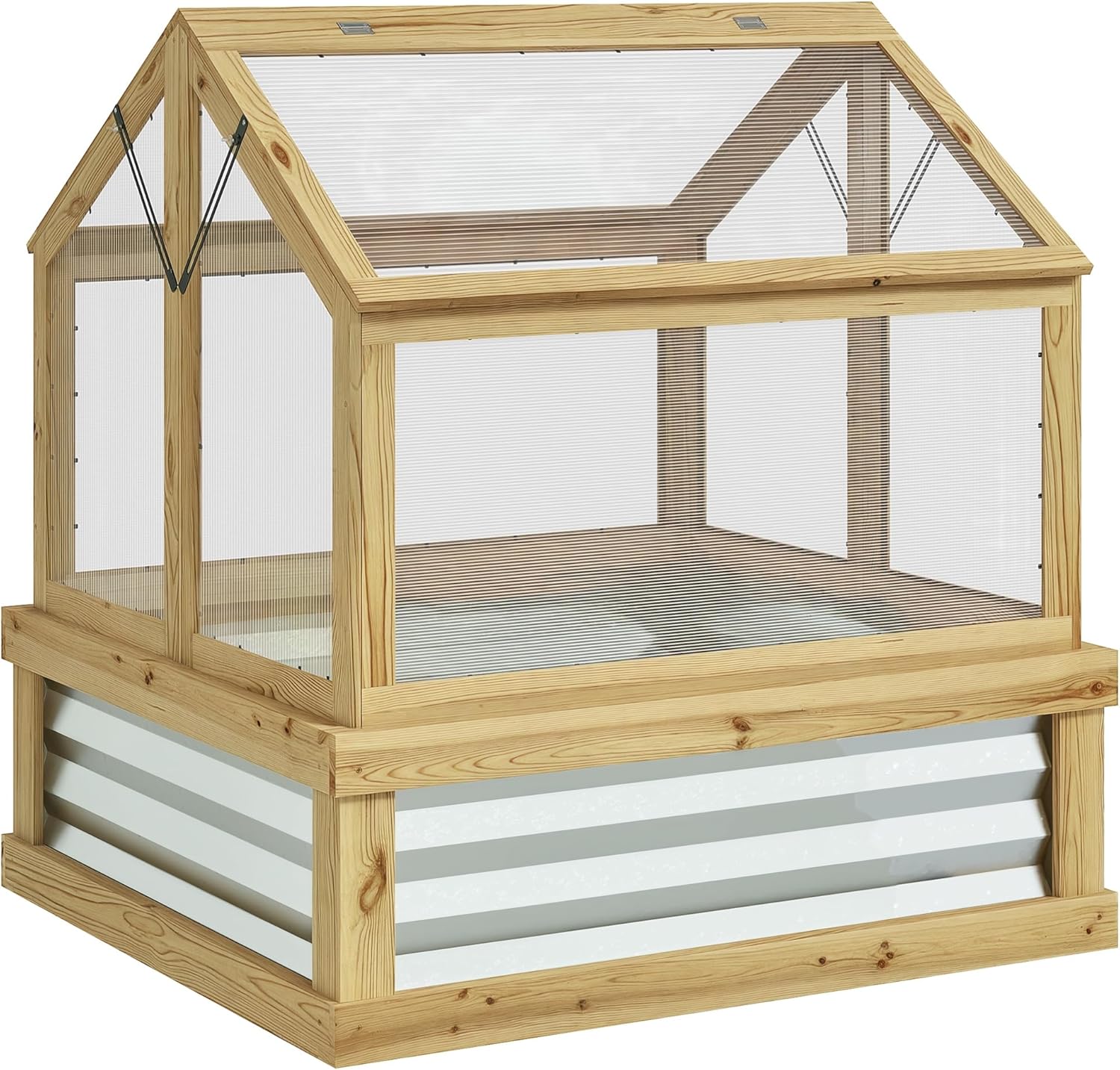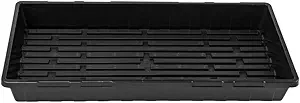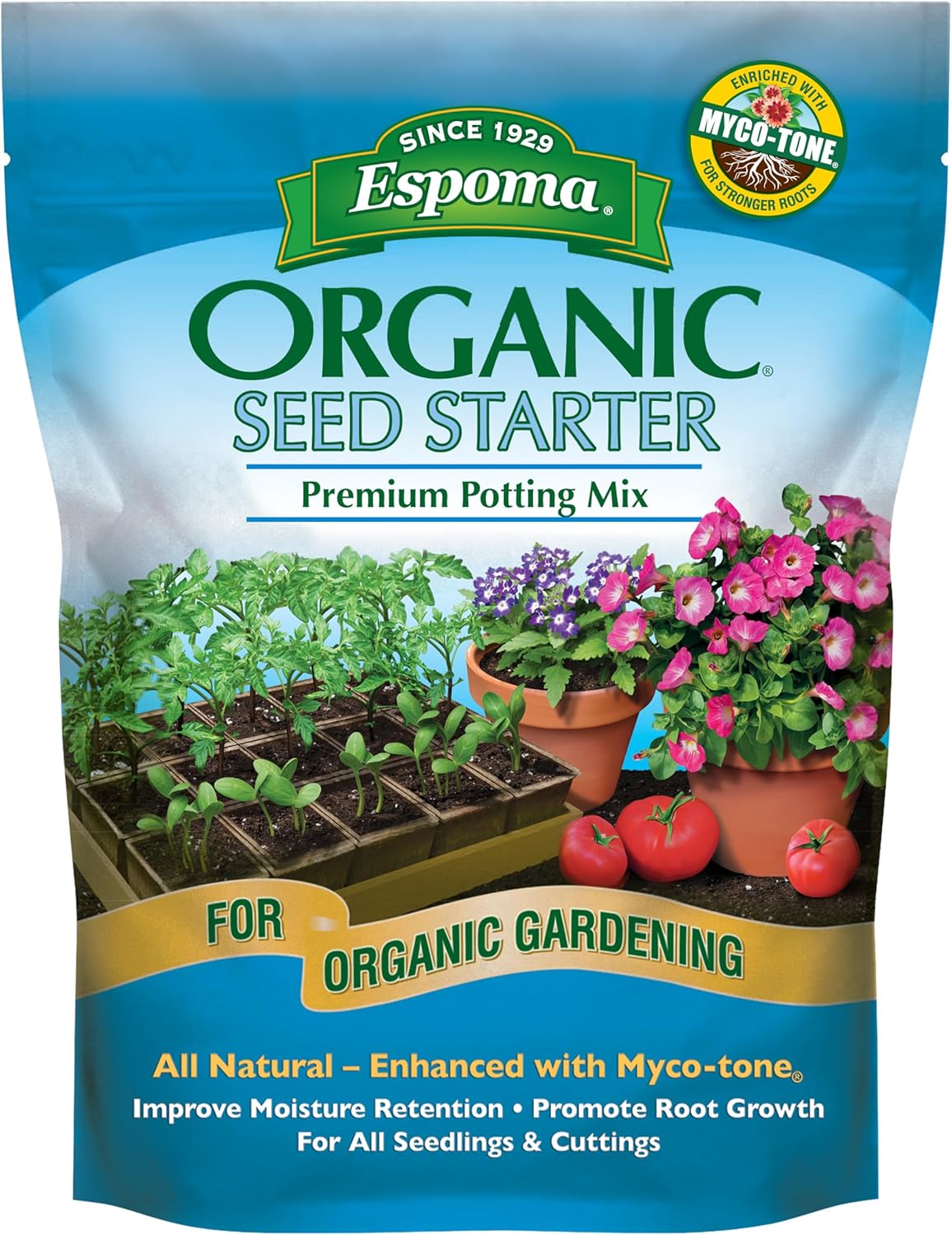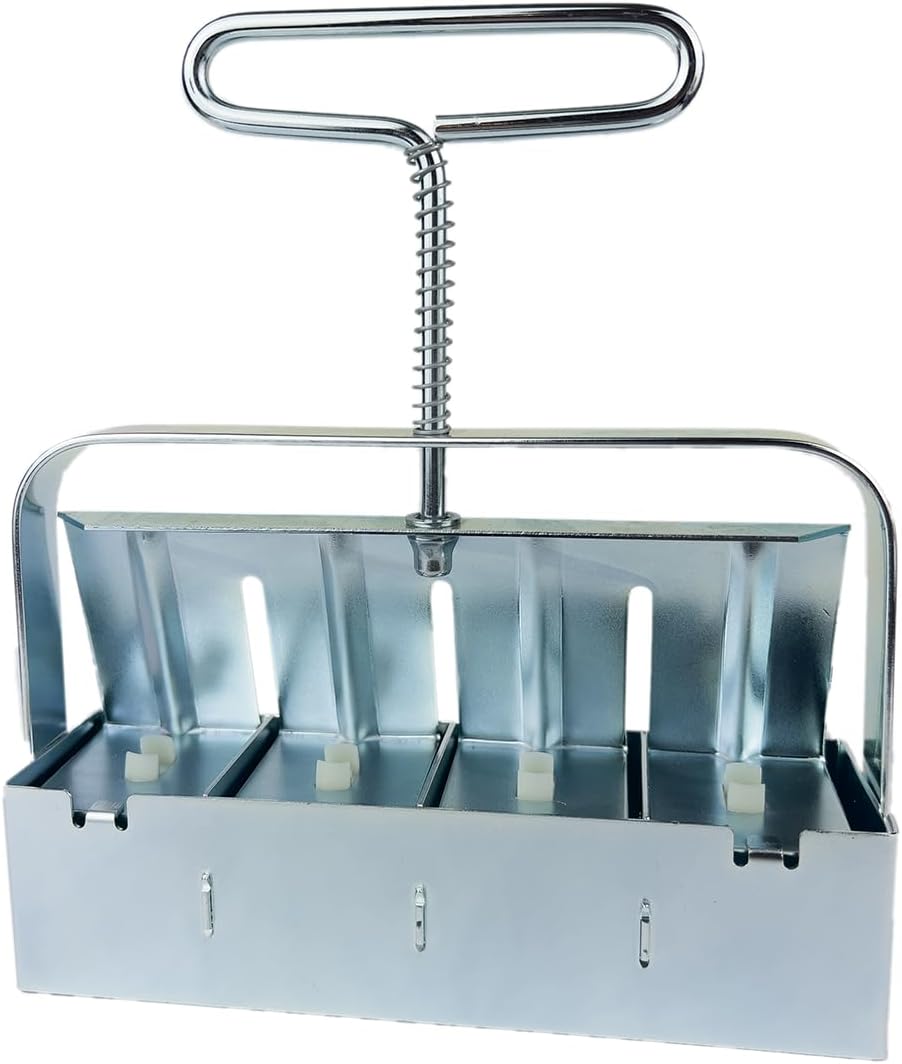Affiliate Disclosure: Our team of experienced greenhouse growers is committed to helping you succeed. This post contains affiliate links. If you purchase products through our links, we may earn a commission at no extra cost to you. This supports our extensive research and hands-on testing. We only recommend products we trust to protect our own gardens.
The Ultimate Guide to Choosing the Best Greenhouse Covering (2025)
Your greenhouse covering is the single most important component of your entire structure. Think of it as the skin of your garden’s sanctuary. It’s the barrier that protects your plants from wind, rain, and snow; the lens that filters and diffuses sunlight; and the blanket that traps precious heat. From our own experience building and re-covering multiple greenhouses over the years, we can say with certainty that your choice of covering will have a greater impact on your growing success and long-term costs than any other factor.
My first-ever greenhouse was a budget kit with a flimsy, non-rated cover. After one brutal Midwestern winter and a surprisingly harsh summer sun, it became brittle and tore, leaving my plants exposed. It was a frustrating and costly lesson in the importance of choosing the *right* material from the start. This guide is designed to help you avoid that mistake. We will delve into the science behind greenhouse coverings, compare the pros and cons of every major material type available to U.S. gardeners, and review the best, most reliable options you can find on Amazon. Whether you’re building a new structure or replacing an old cover, this is your definitive resource for making a smart, long-lasting investment.
The 4 Pillars of a Perfect Greenhouse Cover: A Buyer’s Manifesto
Choosing a cover isn’t just about finding something clear that fits. It’s a balance of four key factors. Understanding these principles will empower you to select the perfect material for your specific climate, budget, and growing goals.
1. Light Quality: Transmission vs. Diffusion
Plants need light, but the *quality* of that light matters.
- Light Transmission: This is the total percentage of light that passes through the material. A higher number seems better, but it’s not the whole story.
- Light Diffusion: This is the magic ingredient. A diffusive cover scatters the light, bathing plants in a soft, even glow. This reduces shadows (so lower leaves get light), prevents “hot spots” that can scorch foliage, and allows light to penetrate deeper into the plant canopy. For most plants, a cover with high transmission AND high diffusion is the holy grail.
2. Insulation (R-Value)
R-value measures thermal resistance—how well the material stops heat from escaping. A higher R-value means better insulation. This is critical for anyone planning on greenhouse gardening year-round, as it directly impacts your winter heating costs. A cover with an R-value of 1.7 can cut your heating bills by nearly half compared to a cover with an R-value of 0.85.
3. Durability & Lifespan
Your cover needs to withstand sun, wind, snow, and hail. Key factors include:
- UV-Stabilization: The sun’s UV radiation destroys plastic. A true greenhouse cover is treated with UV inhibitors to give it a rated lifespan (typically 4 years or more). An untreated cover may not even last a single year.
- Thickness (Mils): For flexible films, thickness is measured in mils (thousandths of an inch). 6-mil is the industry standard for a durable, multi-year cover.
- Tear/Impact Resistance: The material must be strong enough to resist tearing in high winds or damage from hail.
4. Cost: Upfront vs. Long-Term Value
It’s tempting to choose the cheapest option, but that’s often one of the most common greenhouse mistakes to avoid. Consider the cost over the lifespan of the material. A film that costs $300 and lasts 4 years has a true cost of $75/year. A rigid panel that costs $900 but lasts 15 years has a true cost of only $60/year, not to mention the annual savings on heating.
The Ultimate Showdown: Greenhouse Covering Materials Compared
Let’s break down the most popular greenhouse covering options available today. This is where the classic greenhouse plastic vs glass comparison becomes critical, as modern plastics offer incredible performance.
| Material Type | Avg. Lifespan | Insulation (R-Value) | Light Quality | Cost |
|---|---|---|---|---|
| Polyethylene Film (6-mil) | 4-5 years | Low (~0.85) | High Transmission, Low Diffusion | $ |
| Woven Polyethylene Fabric | 5-8 years | Low-Medium (~1.0) | Excellent Diffusion | $$ |
| PVC Vinyl Film | 2-5 years | Low (~0.80) | Highest Clarity (Direct Light) | $$ |
| Twin-Wall Polycarbonate | 10-15+ years | High (1.5 – 1.7) | Excellent Diffusion | $$$ |
The 7 Best Greenhouse Coverings & Essential Accessories
After analyzing the specifications and user experiences for dozens of products, we’ve curated this list of the best greenhouse films and essential accessories available on Amazon, categorized by their greatest strengths.
1. Legigo Greenhouse Film – Best Overall Value

For most DIY and hobbyist greenhouse builders, the Legigo Greenhouse Film hits the sweet spot. It offers the industry-standard 6 mil thickness and UV protection needed for multi-season durability, all at a highly competitive price point. This is the go-to, reliable option for covering hoop houses or replacing the cover on a kit greenhouse. It’s a no-frills, high-performance film that delivers on its promises.
Key Specifications:
- Material: Polyethylene (PE)
- Thickness: 6 Mil
- UV Protection: Yes (rated for extended outdoor use)
- Light Transmission: High (~90%)
- Best For: DIY hoop houses, replacement covers, and budget-conscious growers.
Performance Analysis
In practice, a 6 mil UV-stabilized film like this is the foundation of modern hobby greenhouses. It’s strong enough to handle typical wind and snow loads when installed correctly (pulled tight). The high light transmission is excellent for maximizing sun exposure during the shorter days of spring and fall. While its insulation is basic, it effectively traps solar heat, creating a warm environment and significantly extending your growing season.
What We Love
- Excellent affordability and overall value
- Industry-standard 6 mil thickness is durable
- UV treatment prevents rapid degradation
- Easy to work with and install on most frames
What Could Be Better
- Lower insulation (R-value) than other materials
- Can be punctured by sharp branches or tools
The Bottom Line: This is the smart, economical choice for the vast majority of gardeners. It provides the durability and UV protection you need for a multi-year cover without breaking the bank.
Check Price on Amazon2. Chicarry Greenhouse Film – The Versatile Workhorse

The Chicarry Greenhouse Film is another excellent option in the 6 mil, UV-stabilized category, proving itself as a versatile and reliable choice for a wide range of applications. From low tunnels protecting rows of vegetables to full-sized hoop houses, this film is a dependable workhorse. Its balance of strength, clarity, and durability makes it a popular choice among gardeners who need a cover they can trust for several seasons.
Key Specifications:
- Material: Polyethylene (PE)
- Thickness: 6 Mil
- UV Protection: Yes
- Features: Tear-resistant and weatherproof
- Best For: General purpose greenhouse covering, agriculture, and construction.
Performance Analysis
This film performs exactly as a quality 6 mil cover should. It provides excellent protection from the elements while allowing a high percentage of sunlight to reach your plants. We appreciate its resilience; it holds up well to stretching during installation without tearing. It effectively creates a microclimate that can boost growth and protect plants from unexpected frosts in the spring and fall, making it a true season extender.
What We Love
- Reliable 6 mil durability
- Effective UV stabilization for a multi-year lifespan
- Good clarity for light transmission
- Versatile for many different structures and uses
What Could Be Better
- Standard insulation properties
- Lacks advanced features like IR or anti-condensate
The Bottom Line: A solid, all-around performer. The Chicarry film is a trustworthy choice for anyone needing a standard, high-quality greenhouse cover for general use.
Check Price on Amazon3. VEVOR Greenhouse Plastic – Trusted Brand for Reliability

VEVOR is a well-recognized brand in the tool and equipment space, and their greenhouse plastic brings that reputation for robust, no-nonsense quality. This 6 mil film is engineered for toughness and longevity, designed to withstand the rigors of both agricultural and home gardening use. If you’re looking for a film from a brand with a proven track record, the VEVOR option provides that extra layer of confidence.
Key Specifications:
- Material: Polyethylene (PE)
- Thickness: 6 Mil
- UV Protection: Yes, rated for durability
- Strength: Designed to resist tears and degradation
- Best For: Growers who prefer recognized brands, larger or commercial-style hoop houses.
Performance Analysis
The VEVOR film feels substantial and durable right out of the box. It handles stretching and securing to a frame with confidence. Its primary performance benefit is its durability; it’s designed to endure seasonal expansion and contraction without becoming brittle. The UV treatment ensures it maintains its strength and clarity for several years, protecting your investment and your plants.
What We Love
- From a well-known and trusted equipment brand
- Tough and durable 6 mil construction
- Reliable UV protection for a long service life
- Available in very large sizes for big projects
What Could Be Better
- May be priced slightly higher than less-known brands
- Standard, clear film without diffusion
The Bottom Line: For those who value brand reliability and need a tough cover for a substantial structure, the VEVOR greenhouse plastic is a dependable and long-lasting choice.
Check Price on Amazon4. HORICKA Woven Tarp – Best for Extreme Durability & High Wind

When standard film isn’t tough enough, you need to upgrade to a woven cover. This 10 mil heavy-duty tarp from HORICKA is built for the harshest conditions. Its woven polyethylene construction makes it incredibly resistant to tearing, punctures, and high winds. While marketed as a heavy-duty tarp, its specifications make it an excellent, ultra-durable choice for a greenhouse cover, especially in challenging climates.
Key Specifications:
- Material: Woven Polyethylene
- Thickness: 10 Mil
- Strength: Extremely tear-proof and durable
- Features: Reinforced edges and grommets for easy securing
- Best For: High-wind areas, protection against hail, and applications requiring maximum toughness.
Performance Analysis
The performance of this cover is all about strength. At 10 mil thick and with a woven design, it’s significantly stronger than standard 6 mil film. It can withstand conditions that would shred lesser materials. The light it provides is diffused, which is healthier for plants than direct sun. This is the cover you choose when your primary concern is surviving the storm.
What We Love
- Exceptional strength and tear resistance
- Thick 10 mil construction for extreme durability
- Provides soft, diffused light
- Reinforced grommets can aid in securing
What Could Be Better
- Lower light transmission than clear films
- Heavier and can be more difficult to install
The Bottom Line: If you live in a climate where the weather is a real threat, this heavy-duty woven cover offers the ultimate peace of mind and protection.
Check Price on Amazon5. SUKERUN Greenhouse Film – Best for UV Resistance & Longevity

The primary enemy of any greenhouse film is the sun. UV radiation breaks down plastic over time, making it brittle. The SUKERUN film emphasizes its “anti-aging” and advanced UV-blocking properties, making it a strong contender for growers in high-sun states like California, Arizona, or Florida. This focus on longevity ensures you get the maximum possible lifespan from your investment.
Key Specifications:
- Material: Polyethylene (PE) with enhanced UV stabilizers
- Thickness: 6 Mil
- UV Protection: Advanced “anti-aging” formula
- Features: Dust-proof and tear-resistant
- Best For: High-sun climates and maximizing the lifespan of the cover.
Performance Analysis
While all greenhouse films have UV protection, this one is specifically formulated to endure intense, prolonged sun exposure. This means it will retain its flexibility and strength for longer in southern climates. The 6 mil thickness provides the necessary durability, while the high-clarity plastic ensures your plants get the light they need to thrive. It’s a smart choice for any grower whose primary concern is the relentless sun.
What We Love
- Enhanced UV protection for longer life in sunny climates
- Durable 6 mil thickness
- Maintains flexibility and strength over time
- Good light transmission
What Could Be Better
- Standard insulation properties
- Higher cost than some basic films
The Bottom Line: In regions with intense sun, investing in a film with superior UV protection is a wise move. The SUKERUN film is designed to go the distance.
Check Price on Amazon6. Axgatoxe Tear-Proof Film – Best Heavy-Duty Film

For those who want a step up in durability from standard 6 mil film without moving to a woven fabric, this 7.5 mil film from Axgatoxe is an excellent choice. That extra 1.5 mil of thickness provides a noticeable increase in puncture and tear resistance, making it better suited for areas with risks of hail or heavy branches. It’s a heavy-duty solution that offers extra insurance against physical damage.
Key Specifications:
- Material: Polyethylene (PE)
- Thickness: 7.5 Mil
- Strength: High tear-proof and puncture resistance
- UV Protection: Yes
- Best For: Areas with hail risk, added durability, and long-term installations.
Performance Analysis
The extra thickness is immediately apparent. This film feels tougher and less prone to stretching or damage during installation. It provides excellent protection against the elements, and the added durability means it can be pulled tighter on a frame, reducing wind flap and extending its life. The light transmission remains high, so you’re not sacrificing much clarity for the significant boost in toughness.
What We Love
- Thicker 7.5 mil construction for added strength
- Excellent puncture and tear resistance
- Still offers high light transmission
- Great for areas with hail or falling debris
What Could Be Better
- Heavier and slightly more difficult to work with than 6 mil
- Costs more than standard films
The Bottom Line: If you’re looking for extra toughness and a longer potential lifespan from a standard poly film, upgrading to this 7.5 mil option is a smart and durable choice.
Check Price on Amazon7. DuraLock Wiggle Wire Channel Kit – Essential Accessory for Installation

A great greenhouse cover is only as good as its installation. The single best way to attach a film cover to a frame is with a wiggle wire and lock channel system. This professional method provides a continuous, secure grip on the plastic without creating puncture holes. It makes the film last longer, holds it tighter against wind, and makes future replacement a breeze. We consider this an essential, non-negotiable accessory for any serious DIY greenhouse build.
Key Specifications:
- Component: Installation System
- Includes: Aluminum Lock Channels and PVC-coated Steel Wiggle Wires
- Function: Securely fastens greenhouse film to a frame
- Best For: ALL DIY greenhouses using film plastic.
Performance Analysis
The performance of wiggle wire is transformative. We’ve built greenhouses with staples and screws, and the difference is night and day. Wiggle wire provides a firm, even pressure along the entire length of the film, eliminating weak points. It allows you to pull the plastic perfectly taut, which is the key to shedding snow and resisting wind. The PVC coating on the wire prevents heat transfer that can damage the plastic. While it’s an added cost, it will likely save you from a costly cover replacement down the line.
What We Love
- Provides a secure, professional-grade installation
- Prevents tears and extends the life of the film
- Holds plastic much tighter than staples or screws
- Makes replacing the film in the future much easier
What Could Be Better
- Adds an upfront cost to the greenhouse build
- Requires drilling to mount the channels to the frame
The Bottom Line: Do not build a greenhouse with film plastic without this. A wiggle wire system is the mark of a well-built structure and the best way to protect your cover investment.
Shop Wiggle Wire Kits on AmazonConnecting the Dots: How Your Cover Impacts Your Entire Greenhouse System
Choosing a cover isn’t a decision made in a vacuum. It’s the foundational choice that influences every other system in your greenhouse. A well-insulated cover is the first step, but it also changes your ventilation needs. A tightly sealed structure requires more active air movement to control humidity, making the greenhouse fan vs vent decision even more critical.
Furthermore, the light diffusion and heat retention of your cover will directly affect how often you need to water, making a programmable system from the best drip irrigation kits an invaluable tool for maintaining consistency. A sealed winter environment, made possible by a good cover, can also create a haven for pests if you’re not careful. Knowing how to stop whiteflies in greenhouses and other pests is crucial when there are fewer natural predators around. Ultimately, selecting, installing, and maintaining your cover is a major part of your annual routine, which should be guided by a thorough greenhouse maintenance checklist.
Frequently Asked Questions (FAQ)
Q1: Is a clear or a diffused (milky/opaque) cover better?
A: For most growers, a diffused cover is superior. While a clear cover has slightly higher total light transmission, the diffused light is scattered more evenly, reduces shadows, and prevents foliage from burning. This leads to healthier, more balanced growth. The only exception might be for very early seedling starting, where some growers prefer direct light.
Q2: How do I measure my hoop house for a new plastic film cover?
A: Don’t measure along the ground. Measure the actual path the plastic will take. Use a flexible measuring tape and go from one baseboard, up and over the top of the hoop, and down to the other baseboard. Add at least 1-2 feet to each side for securing it. For the length, measure the length of your structure and add 2-3 feet on each end to properly enclose the end walls.
Q3: What is the real-world lifespan of a 4-year, 6-mil film?
A: The “4-year” rating refers to the UV stabilization. In a high-sun, southern climate (like Arizona), you should expect to get right around 4 years. In a northern climate with less intense sun and winter snow cover (like Minnesota or Maine), it’s not uncommon for growers to get 5 or even 6 years out of the same film. Proper, tight installation is the key to maximizing its lifespan.
Final Thoughts: The Most Important Decision You’ll Make
Your greenhouse covering is the silent workhorse of your garden, quietly managing the environment every second of every day. Investing in the right material for your climate and goals is the most impactful decision you can make. It will save you money, reduce your workload, and ultimately lead to a healthier, more productive garden. Whether you choose the unbeatable value of a 6-mil poly film or the rugged durability of a thicker woven cover, a high-quality, UV-stabilized material is an investment that will pay dividends for years to come.
